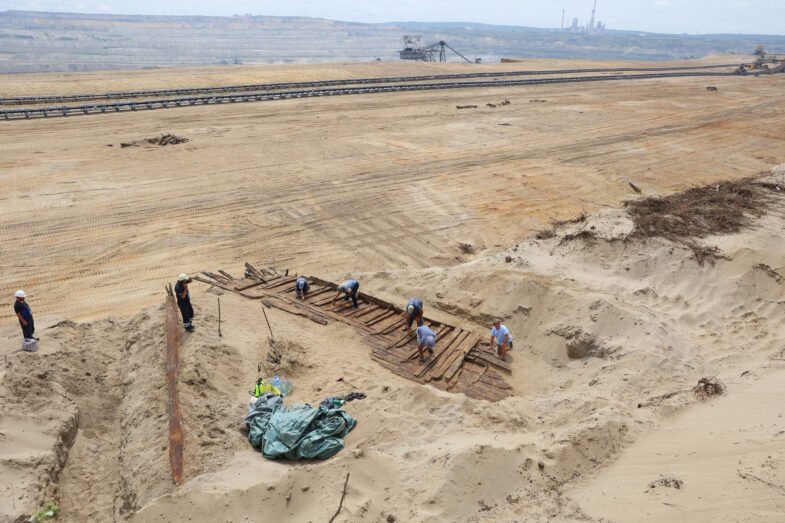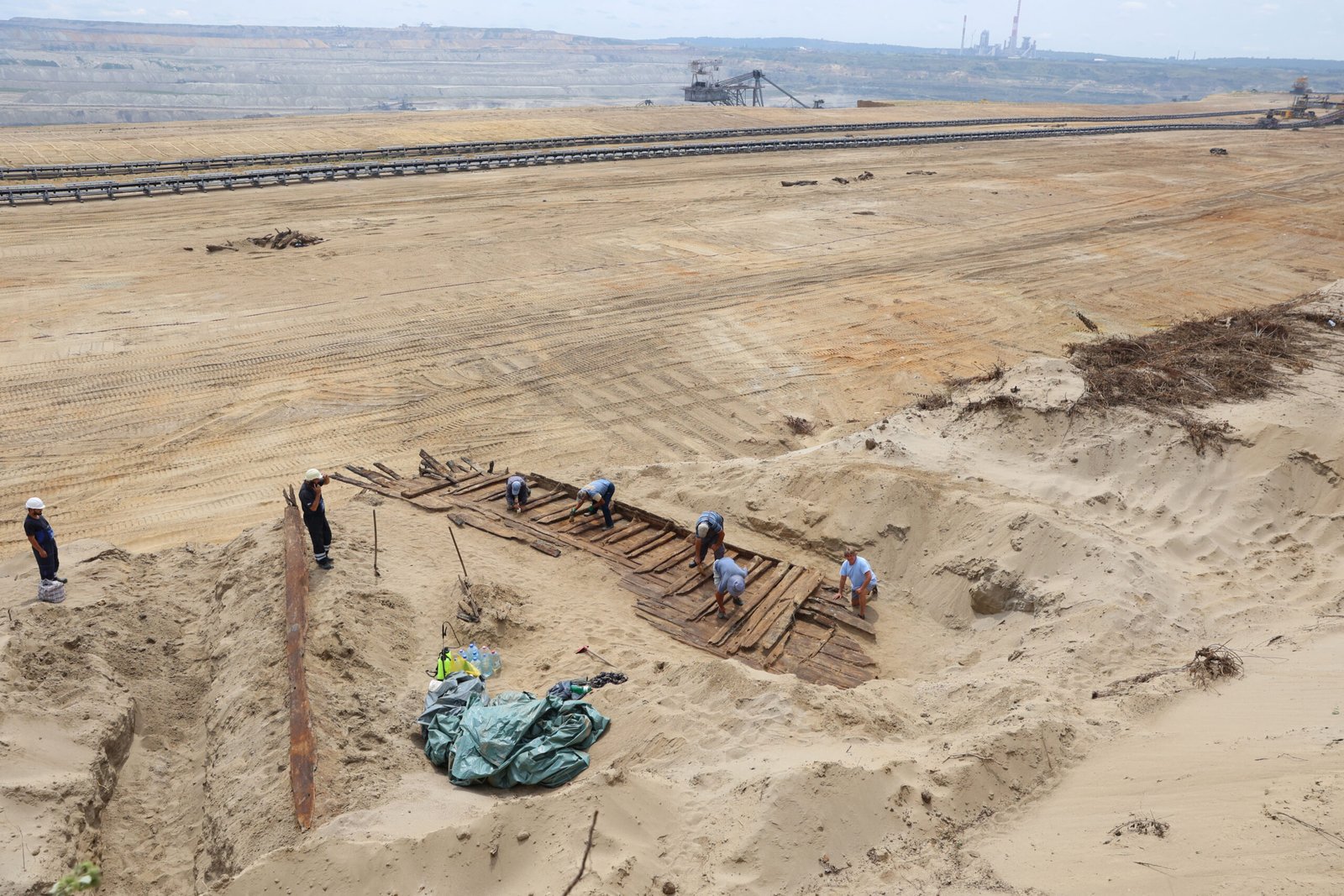The ancient woodwork of a Roman ship that was found by miners in a sizable opencast coal quarry is being painstakingly cleaned by archaeologists in Serbia.

The ancient woodwork of a Roman ship that was found by miners in a sizable opencast coal quarry is being painstakingly cleaned by archaeologists in Serbia.
Experts from the nearby former Roman town of Viminacium sprang into action after an excavator at the Drmno mine discovered some timber. This is the second such discovery in the area since 2020.
The ship was most likely a part of a river fleet that served the 45,000-person sprawling and highly developed Roman city, which had a hippodrome, fortifications, a forum, a palace, temples, an amphitheatre, aqueducts, baths, and workshops. The city also had an amphitheatre, an amphitheatre, an amphitheatre, aqueducts, and workshops.
The ship may have been built as far back as the third or fourth century AD, when Viminacium served as the capital of the Roman province of Moesia Superior and had a port close to a tributary of the Danube River, according to lead archaeologist Miomir Korac.
In the dusty location perched precariously above a sizable open coal pit, he told Reuters, “We may assume that this ship is Roman, but we are unsure of its exact age.
In order to keep the wood from rotting in the hot summer sun, Korac added that it was first sprayed with water and kept under a tarpaulin.
The two ships and three canoes that have been discovered in the region so far, according to archaeologists, either sank or were abandoned at the riverbank.
Thousands of artefacts discovered in Viminacium near the town of Kostolac, 70 kilometres (45 miles) east of Belgrade, will be displayed alongside the most recent find.
It would be difficult to move the newly discovered ship’s 13-meter hull without breaking it, according to Mladen Jovicic, a member of the team working on it.
The entire process of gradual conservation will then take place, he said, after “our engineer friends… prepare a special structure that will be lifted by a crane.”
Viminacium has been the subject of excavations since 1882, but according to archaeologists, only 5% of the site, which is larger than Central Park in New York and unusual in that it is not buried beneath a modern city, has been thoroughly explored.
Golden tiles, jade sculptures, mosaics and frescoes, artefacts, and the bones of three mammoths have all been found thus far.
